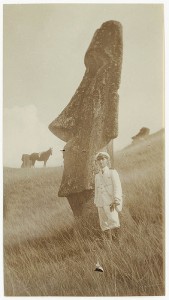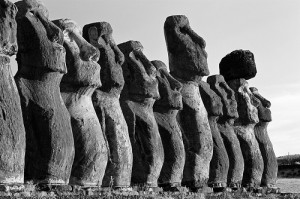Something that has always fascinated me is the big statues, Moai, of Easter Island in the South Pacific. They always seemed so animated to me.
(“Statue, Easter Island, ca. 1930 / photographer Sam Hood courtesy of the State Library of New South Wales on Flickr.com)
And I along with everybody else wondered how they got to where they were by the local population who had no machinery or draft animals. There are lots of theories about how the islanders moved them from the quarries to their final resting places that are up to 11 miles away from the quarries. Most of the theories involved lots of rope and lots of people.
(“the heavy boys” by MattJP under limited license on Flickr.com)
I suscribe to National Geographic Magazine and their latest edition had something that amazed me. A new theory that the islanders “walked” the statues into place. That theory just amazed me, and I feel compelled to pass on my amazement via the following video.
It’s not totally conclusive to me. For one the replica is five tons and the Moai range up to 80 tons. But still? The Moai are built in a “D” shape that makes them slightly forward which facilitates the walking. The quarries were up on a volcano and the ancient roads to the site were slightly downhill almost the whole way.
I don’t know if that is how the Moai were moved but I think they idea is very clever.
What have you been amazed by lately?





I’m sticking w/ the UFO theory!
Interesting post, they are cool looking statues.
I read about this online just last week. It’s interesting. I too have been fascinated by the whole area and the statues.
I do love National Geographic and I subscribe to it as well. I’m fascinated by these statues and their history! Great post for the day!!
Sylvia
This is amazing.
How about those rocks that move, seemingly by themselves, in Death Valley. I love the mysteries of the world.
I, too, wondered how these heavy objects were moved and created. If only the Moais can talk, I’m sure they have lots of stories to tell. National Geographic is an amazing magazine which I wished I had time to read cover to cover.